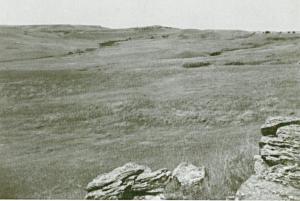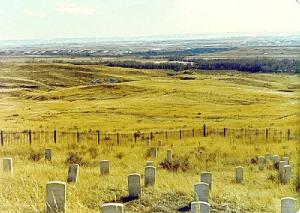Rosebud Battlefield State Park, Montana

On the morning of June 17, 1876, Brig. Gen. George Crook, his 1,050 soldiers and 260 Crow and Shoshone scouts were attacked by a nearly equal combined Sioux and Cheyenne force along Rosebud Creek, Montana Territory.
Crook’s column represented one of three military prongs placed in the field in the summer to seek out and force the Sioux to accept reservation confinement. Under the leadership of Crazy Horse, the warriors fought.
Crook’s men to a standstill. Crook suffered 10 killed and 21 wounded in the six-hour fight. The warriors suffered similar casualties. Crook returned to his supply base near present-day Sheridan, Wyoming. Eight days later, these same warriors defeated Lt. Col. George A. Custer’s column at the Battle of the Little Bighorn. The site is operated by Montana State Parks
Little Bighorn Battlefield National Monument, Montana

Here on June 25, 1876, a large force made up mostly of Sioux and Southern Cheyenne warriors under Sitting Bull, Gall, and Crazy Horse overwhelmed Lt. Col. George A. Custer’s 7th Cavalry in one of the most complete defeats in American military history.
Custer and approximately 210 men were slain in the famous "Custer’s Last Stand." Four miles away, up the Little Bighorn, along the bluffs overlooking the river, Maj. Marcus A. Reno and the rest of the regiment remained for two days until help arrived. Reno lost about 70 soldiers and Crow guides.
The Indian victory was of short duration. By the spring of 1877, most of the Sioux and Cheyenne, including Crazy Horse, facing starvation and constant military pressure, finally surrendered and accepted reservation confinement. The National Park Service operates the site.
Native American History Related Articles
- Indian Wars Of The Old West: Arizona, Part 1
- Indian Wars Of The Old West: Arizona, Part 2
- Indian Wars Of The Old West: Arizona, Part 3
- Indian Wars Of The Old West: Colorado, Part 1
- Indian Wars Of The Old West: Colorado, Part 2
- Indian Wars Of The Old West: Montana, Part 1
- Indian Wars Of The Old West: Montana, Part 2
- Indian Wars Of The Old West: South Dakota
- Indian Wars Of The Old West: Texas
- Indian Wars Of The Old West: Wyoming

